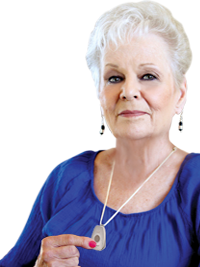Home Healthcare Medical Devices:
Blood Glucose Meters
Getting the Most Out of Your Meter
Testing Your Blood Glucose Accurately
It is important to test your blood glucose
(sugar) accurately so you can manage your blood glucose
levels. Keeping your blood glucose under control helps you
feel better and lowers the risk of blindness, kidney disease,
and nerve damage.
Tips for Using Your Blood Glucose Meter
Although blood glucose meters are simple to
operate, many things can go wrong. Follow the tips below
to get the most accurate results from your blood glucose meter.
Preparing to Test
Read and save all instructions for your meter
and test strips.
Watch and practice with an experienced blood glucose
meter user, a diabetes educator, or a healthcare
professional. Don't be afraid to ask questions!
Wash your hands. Even small amounts of food or
sugar on your fingers can affect your results.
Read the test strip packaging to make sure the
strips will work with your meter.
Do not use test strips from a cracked or damaged
bottle.
Do not use test strips that have passed their expiration
dates.
Make sure you have entered the correct calibration
code (if your meter requires one). |
Test strips may
look alike, but they
are not all the same.
Strips often have very specific chemical
coatings or sizes. Even if an incorrect
test strip fits in your meter, it could
|
|
Testing Your Blood Glucose
Use the correct blood drop size. If there is
not enough blood on the test strip, the meter may
not read the blood glucose level accurately. Repeat
the test if you have any doubts.
Let the blood flow freely from your fingertip;
do not squeeze your finger. Squeezing your finger
can affect the results.
Use a whole test strip each time you use your meter.
Insert the test strip into the meter until you
feel it stop against the end of the meter guide.
|
Even if your meter is
supposed to give an error message when the
blood drop is too small, the message may
appear only when the drop is much too small.
If the blood drop is too small, your meter
can be wrong without giving an error message! |
|
Maintaining Your Blood Glucose Meter
Keep your meter clean.
Test your meter regularly with control solution.
Keep extra batteries charged and ready.
Store your meter and supplies properly. Heat
and humidity can damage test strips.
Replace the bottle cap promptly after removing a test strip.
Following Up
Take your meter with you when you visit your
doctor so you can compare it with your laboratory results.
Talk with your doctor or call the manufacturer's
toll-free phone number if you are having problems with your meter.
Note on Alternative Site Testing:
Some blood glucose meters
can use blood samples from the upper arm, forearm,
base of the thumb, or thigh.
Using alternative sites gives you more options.
But be aware that blood glucose levels from these
sites may not always be as accurate as readings
from the fingertips. Alternative site results differ
from fingertip results when glucose levels are changing
rapidly such as after a meal, after taking insulin,
during exercise, or when you are ill or under stress.
Use blood from a fingertip rather than an
alternative site if:
- you think your blood glucose is low,
- you don't regularly have symptoms when your
blood glucose is low, or
- how you feel doesn’t match the results
from the alternative site.
Caution: Not all meters can use blood from
alternative sites, and not all alternative sites
are the same. Only test from sites that are identified
in the instructions. Alternative site testing is
not for everyone. Talk with your doctor before you
test from a site other than your fingertip.
|
Recognizing Low and High Blood Glucose
Some people have recognizable symptoms of
low or high blood glucose and some do not. The only reliable
way to know when you have low or high blood glucose is to
test it.
When your blood glucose is low, you may feel
faint, shaky, dizzy, or confused. You may begin to sweat.
You may have a headache, sudden behavior change, or seizure.
When your blood glucose is high, your symptoms
may be similar to when your blood glucose is low. You may
feel dizzy or have a headache. You may also feel thirsty
or have an urgent need to urinate.
But many people have no symptoms with low
or high blood sugar levels. Other people have symptoms that
change over time, so they no longer recognize them. Often,
older patients or people who have had diabetes for many
years stop having symptoms.
Blood Glucose Meters Are Not Perfect
Although blood glucose meters are generally
reliable and help to manage diabetes, they are not perfect.
The technology used in blood glucose meters is not as accurate
as testing done in a hospital or a doctor’s office.
Your blood glucose meter may give a wrong
reading if you are dehydrated, are going into shock, or
have a high red blood cell count (hematocrit). Even a very
low blood glucose level can cause an incorrect reading.
If you suspect your blood glucose is too low
or too high, call your doctor or go to an emergency room
immediately… even if your meter shows that everything is fine.
Reporting Problems With Your Glucose Meter
FDA encourages you to report any serious injuries,
deaths or malfunctions you experience with medical products.
FDA will take action when needed to protect the public’s health.
Report the events to FDA at 1-800-332-1088
and to the product manufacturer.






